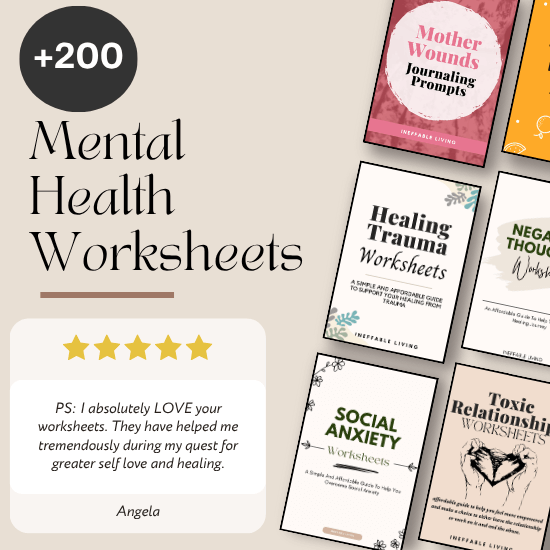Bringing worksheets into therapy can feel awkward at first—like you’re doing too much or like your therapist might judge you. But the truth is, most therapists welcome that kind of engagement. Worksheets show that you’re thinking deeply, taking initiative, and committed to growth. Rather than being “silly,” they’re a smart way to deepen your work. Here’s how to bring them in with confidence.
Why It’s Okay to Bring Worksheets Into the Therapy Room
Bringing worksheets into therapy can feel intimidating at first, but it is actually a helpful and encouraged part of the process. Here are several reasons why it’s completely okay — and even beneficial — to do so:
- It helps you stay focused – Worksheets give structure to your thoughts and help you remember what you want to talk about, especially if you get overwhelmed during sessions.
- It shows initiative – Using worksheets between sessions demonstrates that you’re engaged and actively working on your healing. Therapists appreciate this kind of participation.
- It makes expressing emotions easier – If you find it hard to open up, a worksheet can serve as a starting point, making it easier to bring up thoughts and feelings that are difficult to say out loud.
- It bridges the gap between sessions – Therapy happens once a week or less, but healing is ongoing. Worksheets help you track your experiences and progress between appointments.
- It offers deeper insight – By sharing completed worksheets, you give your therapist a clearer picture of what’s going on internally, which helps tailor your sessions to your real needs.
- It supports long-term growth – Over time, reviewing your worksheets with your therapist can help you identify patterns, measure emotional progress, and celebrate how far you’ve come.
- It fosters collaboration – Therapy is most effective when it’s a shared process. Bringing worksheets into the room invites your therapist into your self-reflection, making the work more connected and meaningful.
Using worksheets in therapy isn’t about doing it “right” — it’s about doing what helps you move forward, and your therapist is there to support that.
Related: Overwhelmed by Big Feelings? These Worksheets Can Help You Name and Process Them
How to Bring Worksheets Into Therapy (And Not Feel Silly)?
1. Remember: Therapists Appreciate Initiative
Therapists often assign worksheets themselves—so if you bring your own, you’re not being “extra.” You’re showing that you’re actively engaging in your healing, which most therapists see as a positive sign.
2. Choose a Worksheet That Matches What You’re Exploring
Pick a worksheet that connects with something you’ve already been working on in therapy—like anxiety triggers, communication patterns, or negative self-talk. This makes it easier to integrate into the session naturally.
3. Say Something Simple to Introduce It
You don’t need a long explanation. Try:
“I found this worksheet really helpful—would it be okay if we talked about it today?”
or
“This brought up a few things I want to explore with you.”
A short, honest sentence is enough.
4. Focus on Insights, Not Perfection
You don’t have to fill it out “correctly.” Worksheets aren’t tests—they’re tools. Share what stood out to you, what felt confusing, or what brought up emotion. That’s where the real work happens.
Related: Grieving and Numb? These Worksheets Can Help You Sit with Loss and Heal
5. Let It Guide the Session, Not Take Over
Use the worksheet as a conversation starter—not a script. You don’t need to read every answer aloud. Instead, highlight a few questions or answers that brought something up and explore those with your therapist.
6. Don’t Worry About Looking “Too Prepared”
Therapy isn’t about being casual—it’s about being real. If worksheets help you access your truth more easily, they belong in the room. Your therapist is there to support what works for you, not judge your process.
7. Use It to Track Patterns Over Time
Bringing in worksheets regularly—like emotion logs or thought records—can help your therapist see trends you might not notice. This can deepen the therapeutic process and make progress more visible.
Related: Trapped in Codependency? These Worksheets Help You Reclaim Your Identity

Conclusion
Using worksheets in therapy isn’t silly—it’s smart, intentional, and brave. It shows you’re willing to do the work beyond the session and want to get the most out of your healing journey. Trust that if it helps you open up or make sense of your mind, it absolutely belongs in the therapy room.